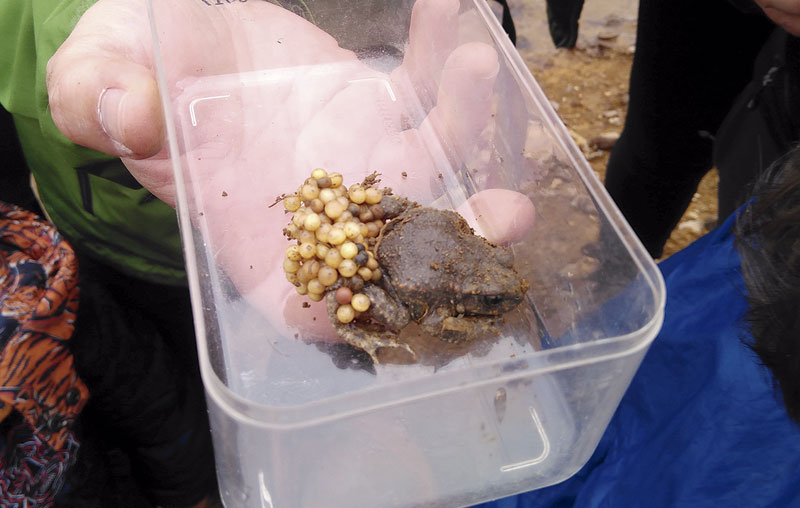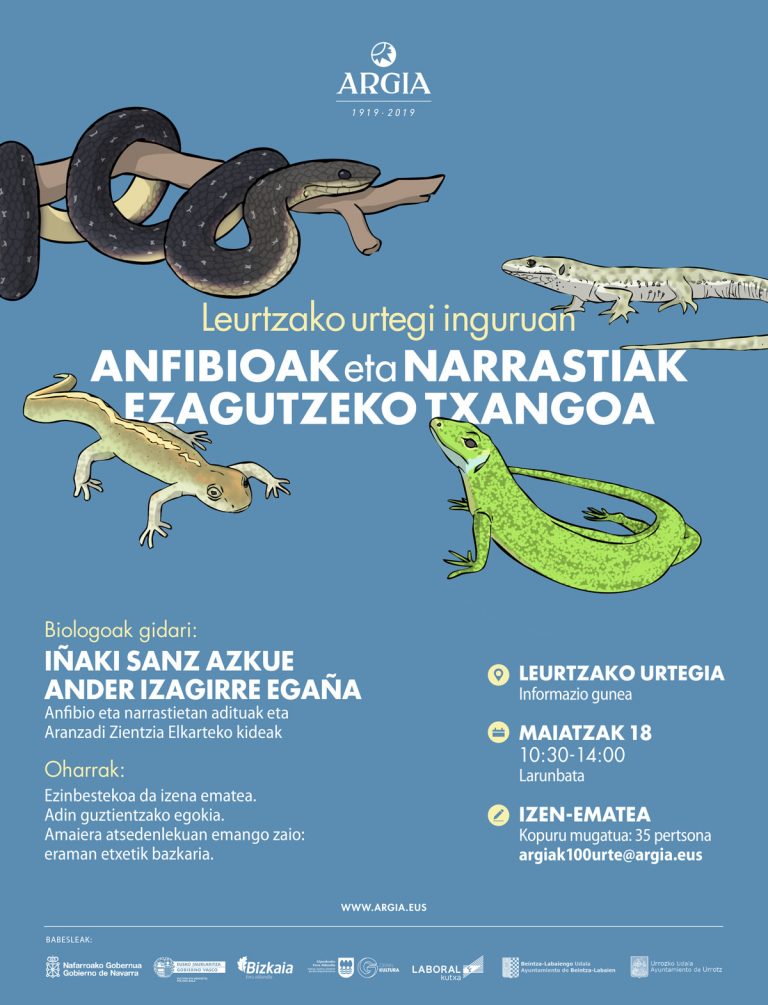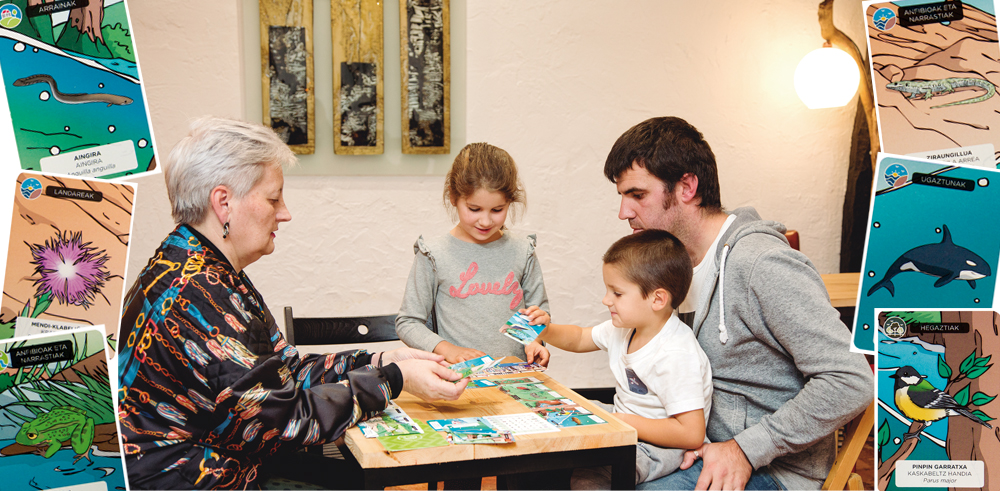Hidden inhabitants of the park
- In the afternoon we enter the Aiete Park of Donostia. They've closed the front door to our back. A group of about ten people, we're inside, alone. Does it make sense to be here? If you are one of those who think parks are a leisure space for the human being, you won't make much sense of it. But if you think they can be important spaces for the conservation of the city's animals and plants, yes. He has left and we have come to the park to see the amphibians there.

We have approached the park of Aiete with the excuse of a course organized by the Society of Sciences Aranzadi. Ion Garin-Barrio. It would be normal to go to the mountain to know the species of amphibians that surround us or, why not, to approach a beautiful wetland of some natural park in the area. However, here we are in the middle of a green area of the city, at night and with the intention of seeing the amphibians. In fact, in the parks of town and town there is life. Day and night. And much more than we think.
Kings, Peace Conferences and...
The park of Aiete takes us to the Donostia-San Sebastian of the 19th century: it has a great neoclassical palace, with green meadows and gardens, ponds, caves, waterfalls… and a space surrounded by dozens of trees. It is not difficult for the visitor to imagine the kings of Spain Isabel II, Alfonso XII, María Cristina and Alfonso XIII who have spent there walking along the paths around; or to imagine Queen Victoria of England sitting next to the pond.
The dictator Franco also spent several summers there, and surely, in the burning summer days, he would seek refuge under the trees, trying to feel the fresh wind generated by the water that falls from the waterfall. I did not, of course, expect international experts to meet there several years later at the Peace Conference in Aiete, but that has been the case. Since Aiete, people have passed through different forms, origins and mentalities. Meanwhile, hidden in that pond, or hidden among the roots of this sketch, some small inhabitants of the park of Aiete have gone unnoticed: the amphibians.

Tritons, frogs and toads
The course was held in spring, it is no coincidence. Now is the best time to see amphibians. They are in full swing and the rafts and wells of the park are visited by frogs, toads and tritons at this station. We don't know if throughout history the great figures who have passed through the Aiete Palace have seen tadpoles or frogs swim in the hall, but we can say quite safely that they would at least listen to the song.
In fact, the song of the common frog (Pelophylax perezi) is worthy to be heard. In the warm days of spring and summer, they are heard throughout the day and at sunset, in stripes, in a loud and strident song. Not only do we listen, but we also see the frog. On the shores of the pond, with our head out of the water, inside the body, it has been watching us. Let's admit it: at that time, those of us who were left were us.

But the frog's is not the only song we've heard. The common Txantxiku (Alytes obstetricans) has also launched its night crown. He has walked under the forest, provoking us with his usual mix of notes between singing and whistling: “Kun-kun”. It's the oldest species of toad in Europe. It's easy to get close to where your song is. But finding it is something else. Despite having it half a meter away, you don't think it's easy to see. Maybe it's the experience of the old man. The continuous sound of the cascade and the fine song of the txantxiku are the ones that break the silence of the night. But it's a reassuring sound. The peace conference had to be here, necessarily…
We have flashlights on. In the afternoon, people who have had the theoretical part of the course are happy to put what they have learned into practice. But the best thing is to come: The tritons are missing!

Tritons are amphibians with tails. From the urodelos group. We've seen it at the bottom of the pond, and there they are. In the park of Aiete the students of the course have differentiated two types of triton: the palmate triton (Lissotriton helveticus) and the marmolaire tritre (Crusus marmoratus). They're under the water. Stop. Ion Garin-Barrio has hunted males and females. He is the person authorised to handle animals. The explanations have been clarifying, and the fact of having seen the Marmolaire of the triton, something that could not be forgotten for a long time.
Importance of parks in amphibian conservation and biodiversity
In the Aiete Park we have seen four species of amphibians. But there's more. They also live the common toad (Bufo spinosus) and the common salamander (Salamandra salamandra), although today we have not seen them. It has a large percentage of amphibian species in San Sebastian. Amphibians are the most threatened backbone in the world, and it seems hard to think that parks can have something to do with their conservation. However, green areas can act as dwellings of urban amphibians and, in general, as respirators of biodiversity, so it is important that their management also takes into account the species of indigenous fauna and flora and the environment.
In addition to the use of urban parks for human leisure, they can perform important educational and urban biodiversity functions – of which you can read more in Article 2559 of ARGIA on How to Live Nature in Educational Centers of Urban Space. All these functions can be combined with simple actions and with proper organisation and management of the overall landscape of the park and small indoor areas (microhabitats). And they can be used for the conservation of populations of endangered species.


















